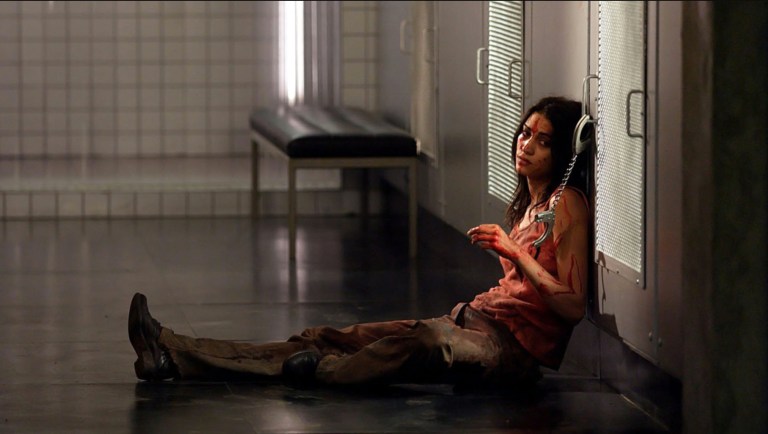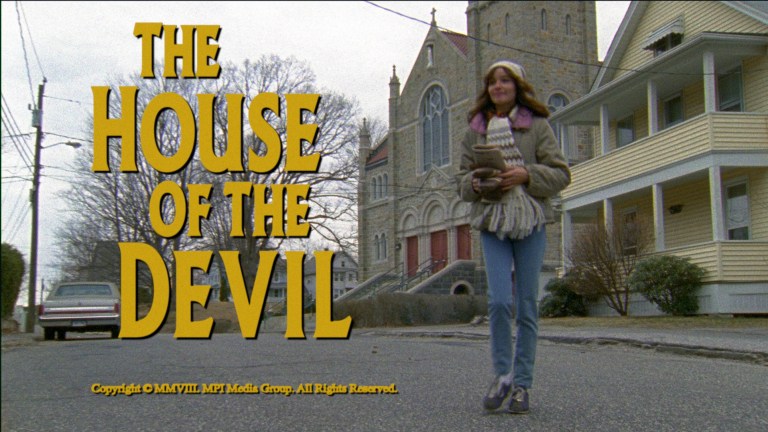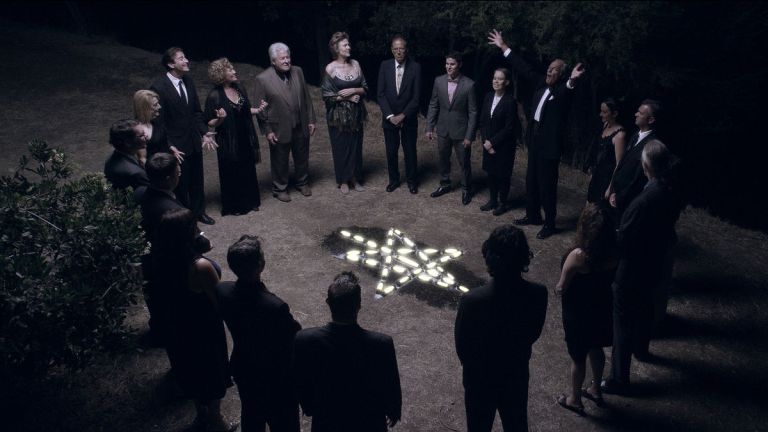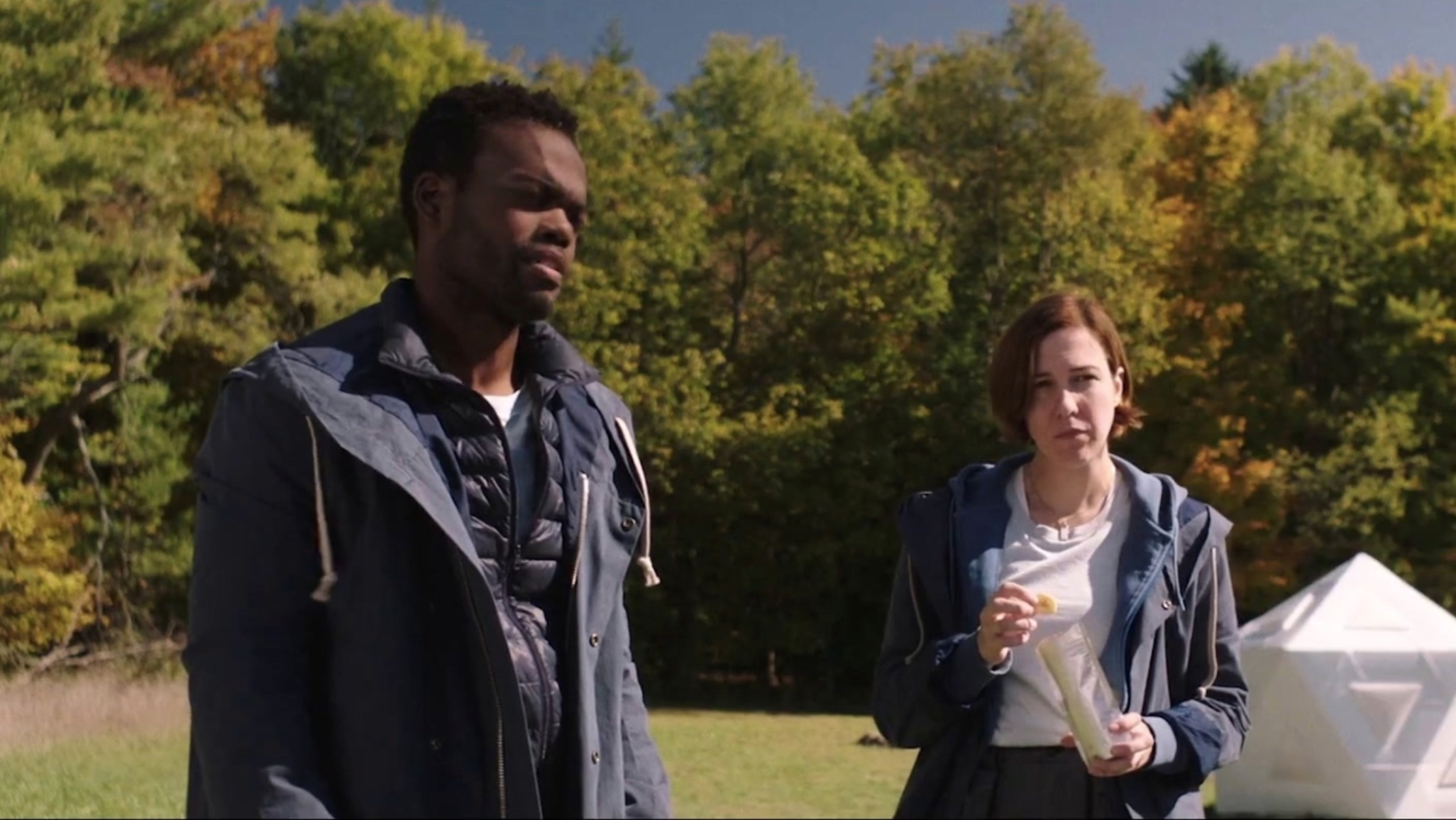Believing in Evil: 10 Scary Movies About Cults
“A lot of people think we’re crazy. But I doubt they’re as happy as we are.”

Psychiatrist Robert Jay Lifton says the three defining characteristics of a cult are: 1) a charismatic leader who is worshiped, 2) coercive persuasion and 3) the members are exploited through economic, sexual or other means. We’ve witnessed many groups that fit this bill in recent history, so how does this keep happening? It’s simple, really. Cults start out just like any other church or group and by the time a follower realizes that something sinister is underway, it’s too late.
That’s what makes this kind of cult so terrifying — if we belonged to a cult would we even recognize it? Would we be willing to make a commotion? Leave? The fear (and fascination) with cults is nothing new and movies about cults have been around since we started making films. This list compiles the 10 scariest movies about cults ever made:
The Wicker Man (1973)

Lauded as the “the Citizen Kane of horror movies” by Cinefantastique, The Wicker Man follows the story of a policeman who travels to a remote island to investigate a young girl’s disappearance. The island’s pagan Celtic worshipers claim the girl doesn’t exist, forcing the policeman to go to extreme lengths to find the truth. The film holds an 89% approval rating on Rotten Tomatoes.
Children of the Corn (1984)

The first 1984 film spawned a franchise with at least nine sequels — so you could say it has a “cult” following . It’s the movie that first comes to mind when thinking about creepy children. A couple stumbles upon a religious cult of kids who previously killed all of the adults in their town. Rolling Stone listed Children of the Corn #7 in their list of “Top 30 Stephen King Movies.”
Martyrs (2008)

This New French Extremity film, written and directed by Pascal Laugier, is not for the faint of heart. A young woman named Anna is abducted by a secret society whose purpose is to learn the secrets of the afterlife. To obtain this knowledge, they abduct and systematically torture women, believing this will push their “martyr” into a transcendental state. Anna makes it farther than any previous test subject in the film’s painful and jaw-dropping ending.
House of the Devil (2009)

Although it was released in 2009, House of the Devil features Ti West showing off his penchant for retro films. It has the raw, grainy look of a 70s movie. The plot starts off with a familiar trope: a young college girl, Samantha, takes a babysitting gig and ends up at a remote house. Upon arrival, the man who hired her reveals that she’ll be babysitting his elderly mother-in-law. Samantha reluctantly agrees after her agreed upon pay is doubled. This, of course, turns out to be a mistake as she finds herself the target of a ritualistic sacrifice. Roger Ebert awarded House of the Devil 3 out of 4 stars and called it “an introduction for some audience members to the Hitchcockian definition of suspense.”
The Sacrament (2013)

Based on the real-life Jonestown Massacre, Ti West’s The Sacrament does a great job of showing the insidiousness of cults. After learning that his sister is living in a remote religious commune, Patrick (Joe Swanberg) and his friends go for a visit. Unsurprisingly, the trip doesn’t go well as the group becomes privy to the brainwashing and abuse.
Starry Eyes (2014)

We’re all familiar with the concept of selling your soul for fame, and that’s exactly what happens in this horror film about a young actress trying to make it big. Literally. Hollywood hopeful Sarah lands an audition with Astraeus Pictures. At the callback, Sarah reluctantly takes off her clothes and falls into a trance-like state. During this time, she notices that the casting director is wearing a pentagram necklace. Deals with the devil don’t come easy, and soon Sarah’s physical and mental health are deteriorating. Time magazine picked it as one of the ten best films at the SXSW Film Fest that year and remarked, “If David Lynch and David Cronenberg came together to craft a gory, psychological mindbender, it might be Starry Eyes.”
The Invitation (2015)

Despite being made in 2015, this film didn’t gain the recognition it deserved until a year after its release when it became available on Netflix. Will arrives at the dinner party of his ex-wife and it doesn’t take long for him to realize something is very wrong. He tries to get to the bottom of this lingering feeling while dealing with the trauma he previously endured in her house. In a 4.5-star review, Heather Dixson of the Daily Dead declared The Invitation “one of the most devastating horror films I’ve seen in years.”
They Remain (2018)

A slow burn thriller with elements of sci-fi. Two people arrive at a remote undisclosed location where an infamous cult used to live before they died out by way of a mass murder event. The people are remote workers for a company and have been sent to study the soil, air, water, animal life, and vegetation in the area to look for clues about what happened with the cult. The longer the pair stay working in isolation, the stranger things become.
The Lodge (2019)

From the duo who gave us Goodnight Mommy, The Lodge is visually similar but even more unsettling. This one also comes with a twist, but by the time it becomes apparent, the shocks have only just started. The film is about Grace, a young woman who was the only survivor of a suicide cult, as she tries to get in the good graces of her soon-to-be stepkids while alone with them at their father’s cabin. The children are skeptical due to Grace’s background and the belief that she broke up their family. It’s a slow burn that succeeds in getting under the viewers’ skin from the very start — and a poignant example of the effects of PTSD and trauma.
Midsommar (2019)

After a heart-wrenching family trauma, Dani (Florence Pugh) embarks on a group trip to attend a midsummer celebration in a Hälsingland, Sweden commune. The bright, luscious backdrop and hallucinatory scenes make the horror that unfolds all the more unnerving. The group becomes privy to the community’s disturbing beliefs after witnessing the sacrificial death of two elders, and the tension rises from there.
Further reading:
